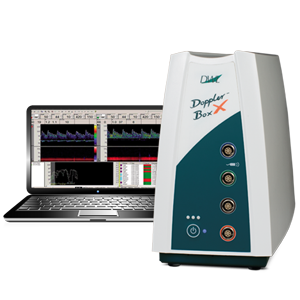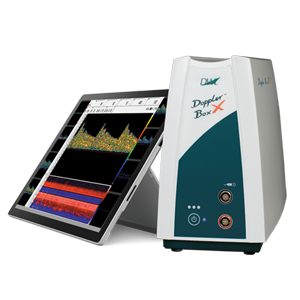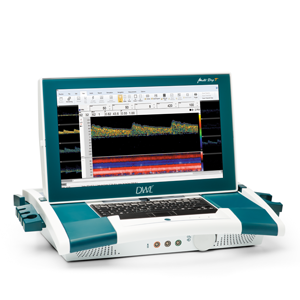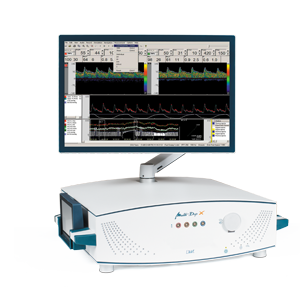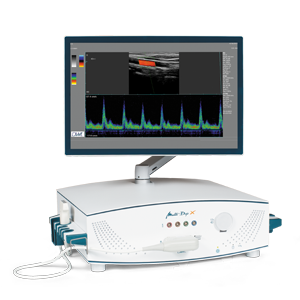

DWL monitoring probes are specifically designed for DWL fixations and are available with Click&Stay or screw-topped options. All monitoring probes are very lightweight and easy to carry. Due to the probe positions being adjustable on the fixations, optimal adjustment of the temporal insonation window is possible. The advantage of the Click&Stay fixation lies in the ability to loosen the probe by applying brief pressure to the outer fixation ring and thus realigning the probe in a very fast and simple manner. All standard DWL monitoring probes are available with a 2.5 m cable length. Optionally, 3 and 5 m extension cables are available.
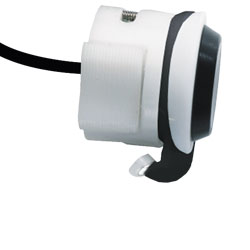
2 MHz monitoring probes
The 2 MHz monitoring probe is primarily used for transcranial monitoring examinations to insonate the main arteries of the brain, the Circle of Willis. The 2 MHz monitoring probe can penetrate to a depth of approx. 30–150 mm.
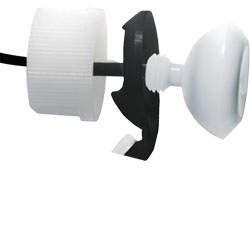
1 MHz monitoring probes
Using 1 MHz monitoring probes, it is possible to examine patients with hyperostoses and those with complicated insonation windows. The advantage of a 1 MHz probe compared to a 2 MHz probe lies in the ability to take measurements at high flow velocities at greater depths, e.g. in the case of vasospasms or deep-seated stenoses of the basilar artery.
The 1 MHz monitoring probe can penetrate to a depth of approx. 30–150 mm.
4 MHz monitoring probes
The 4 MHz monitoring probe reaches all arteries and veins located within the penetration depth of this frequency. 4 MHz monitoring probes are specifically suited for intracranial examinations on neonates. The 4 MHz monitoring probe can penetrate to a depth of approx. 12–30 mm.
2+2.5 MHz monitoring probes
The 2+2.5 MHz probe has been specifically developed for the transcranial differentiation of emboli in the Circle of Willis. Unlike other probes, this probe offers a greater bandwidth of 2 MHz to 2.5 MHz, enabling examinations in the dual-frequency mode. The 2+2.5 MHz monitoring probe can penetrate to a depth of approx. 30–150 mm.
2 MHz MRSafe probes
MRSafe (Magnetic Resonance Safe) probes do not contain any magnetic components. Therefore, it is possible for the patient to keep the probes on while undergoing an MRI scan. MRSafe probes are available with 3 m and 5 m cable lengths.






